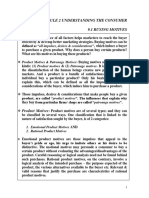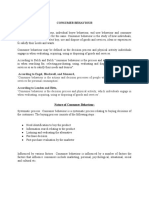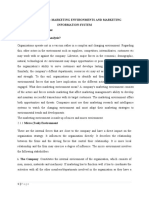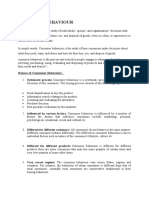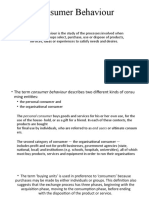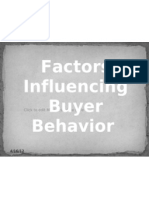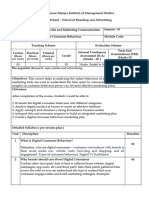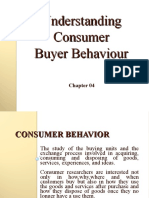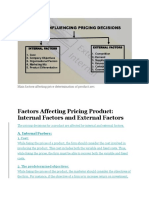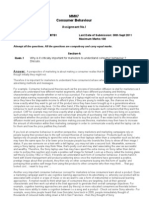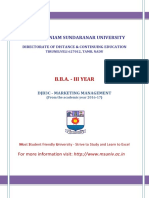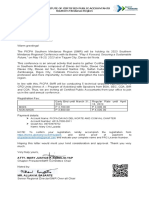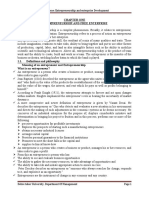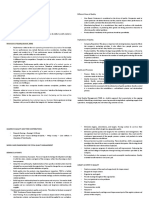0% found this document useful (0 votes)
236 views12 pagesConsumer Behavior Course Guide
This document provides an overview of a course on consumer behaviour. It outlines the course objectives and 5 units that will be covered: concepts and models of consumer behaviour; psychological, socio-cultural, and group influences; high and low involvement decision making; online purchasing; and emerging issues. Consumer behaviour refers to how individuals select, purchase, use, and dispose of goods and services. Understanding consumer behaviour helps marketers make better strategic decisions by determining consumer needs and how to present products most effectively.
Uploaded by
Sourav DeyCopyright
© © All Rights Reserved
We take content rights seriously. If you suspect this is your content, claim it here.
Available Formats
Download as PDF, TXT or read online on Scribd
0% found this document useful (0 votes)
236 views12 pagesConsumer Behavior Course Guide
This document provides an overview of a course on consumer behaviour. It outlines the course objectives and 5 units that will be covered: concepts and models of consumer behaviour; psychological, socio-cultural, and group influences; high and low involvement decision making; online purchasing; and emerging issues. Consumer behaviour refers to how individuals select, purchase, use, and dispose of goods and services. Understanding consumer behaviour helps marketers make better strategic decisions by determining consumer needs and how to present products most effectively.
Uploaded by
Sourav DeyCopyright
© © All Rights Reserved
We take content rights seriously. If you suspect this is your content, claim it here.
Available Formats
Download as PDF, TXT or read online on Scribd
/ 12

